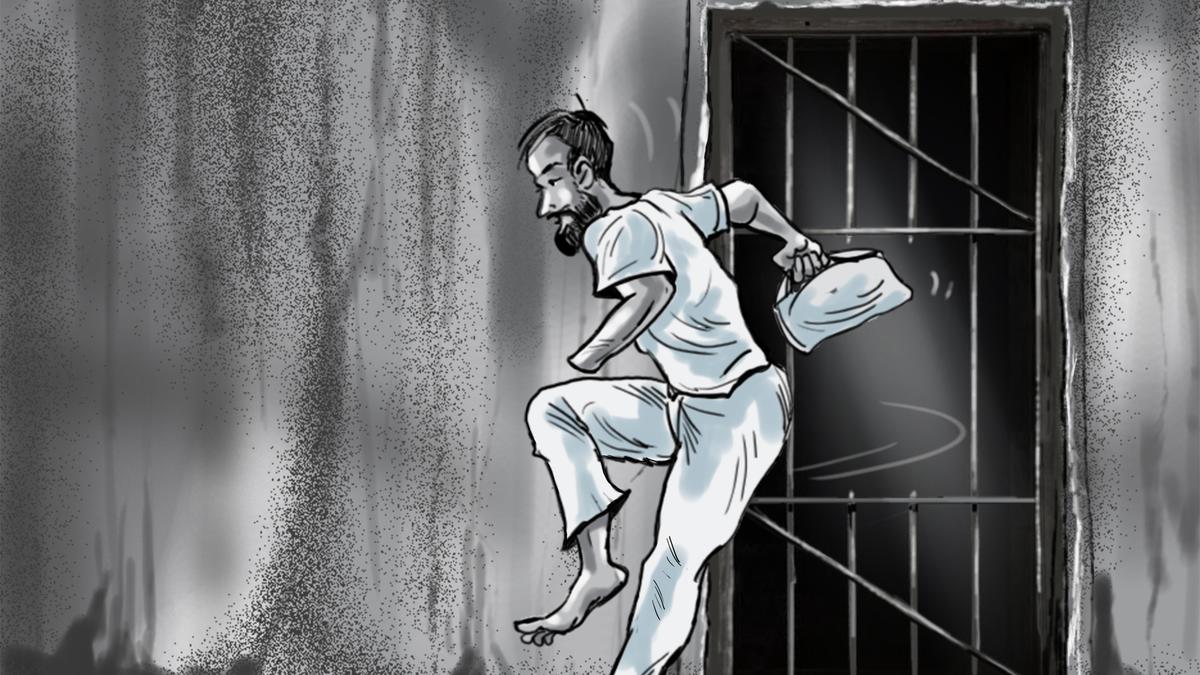Now Reading: Govindachamy’s Escape Highlights Security Lapses in State Prisons
-
01
Govindachamy’s Escape Highlights Security Lapses in State Prisons
Govindachamy’s Escape Highlights Security Lapses in State Prisons

Rapid Summary
- Incident Details: Govindachamy, a convict in Kerala’s kannur Central Prison, escaped using a makeshift rope made from prisoners’ clothes. He scaled three walls and escaped through a defunct electric fence.
- Capture: Alert citizens helped identify Govindachamy near Talap and spotted him hiding inside a water well. Police successfully apprehended him following public tip-offs.
- Security Lapses:
– Gaps in prison surveillance; non-functional electric fencing and CCTV cameras contributed to his escape.
– Jail officials overlooked tell-tale signs like weight loss, altered behavior, and hoarding of materials used for escape.
– Overcrowding worsens jail conditions; Block 10 intended for solitary confinement accommodates two inmates in tiny cells.
- Prison Infrastructure Issues: Kerala’s prisons are overcrowded (135% occupancy rate) with outdated facilities lacking proper maintenance or staffing. There are only 2,289 personnel against the sanctioned strength of 2,415, whereas at least 3,600 employees are needed for effective management.
- Administrative Concerns: Reliance on contract workers introduces risks due to potential outside influence. Procedural delays have stalled modernization projects across the prison system.
- Political allegations: Claims of political interference affecting jail governance were countered by CPI(M) representatives as politically motivated propaganda.
Indian Opinion analysis
The jailbreak incident highlights severe structural failures within Kerala’s correctional system-underscoring an urgent need for robust reforms in surveillance mechanisms and infrastructure upkeep.The systemic reliance on outdated equipment like non-functional electric fences coupled with limited human resources has exposed vulnerabilities that could be exploited again if not addressed promptly.
The overcrowding issue paints a broader picture of rising incarceration rates amid limited capacity-a concern exacerbated by drug-related crimes as noted by officials. Understaffing further limits monitoring efficiency while reliance on temporary hires opens pathways to corruption or compromised security.
allegations linking political interference to administrative shortcomings point to challenges rooted deeper than operational inefficiencies alone. While partisan accusations may detract from collaborative problem-solving efforts, they underscore how governance complexities can hinder effective reforms.
Ultimately, this jailbreak should serve as an inflection point for policymakers to modernize jails holistically-not just patch security loopholes but create humane spaces aligned with evolving correctional standards while balancing resource constraints.
Read more: Original Article Link























